Abstract
The HIV education and prevention strategy of the Centers for Disease Control has three principal components: (a) public information and education, (b) education for school-aged populations, and (c) risk reduction education and individual counseling and testing services for people at increased risk of HIV infection. The most visible components of the public information and education programs are the National Public Information Campaign ("America Responds to AIDS"), the National AIDS Hotline system, and the National AIDS Information Clearinghouse. Components of the youth education program consist of funding for national health and education organizations, funding for State and local education departments, training, surveillance of education efforts, and evaluation. Counseling and testing has entailed performance of approximately 2,500,000 HIV antibody tests with pre- and post-test counseling, notification and counseling of sexual and needle-sharing partners of those infected with HIV, and targeted risk reduction education through community-based organizations. Over time, these activities will continue to evolve and become more effective.
Full text
PDF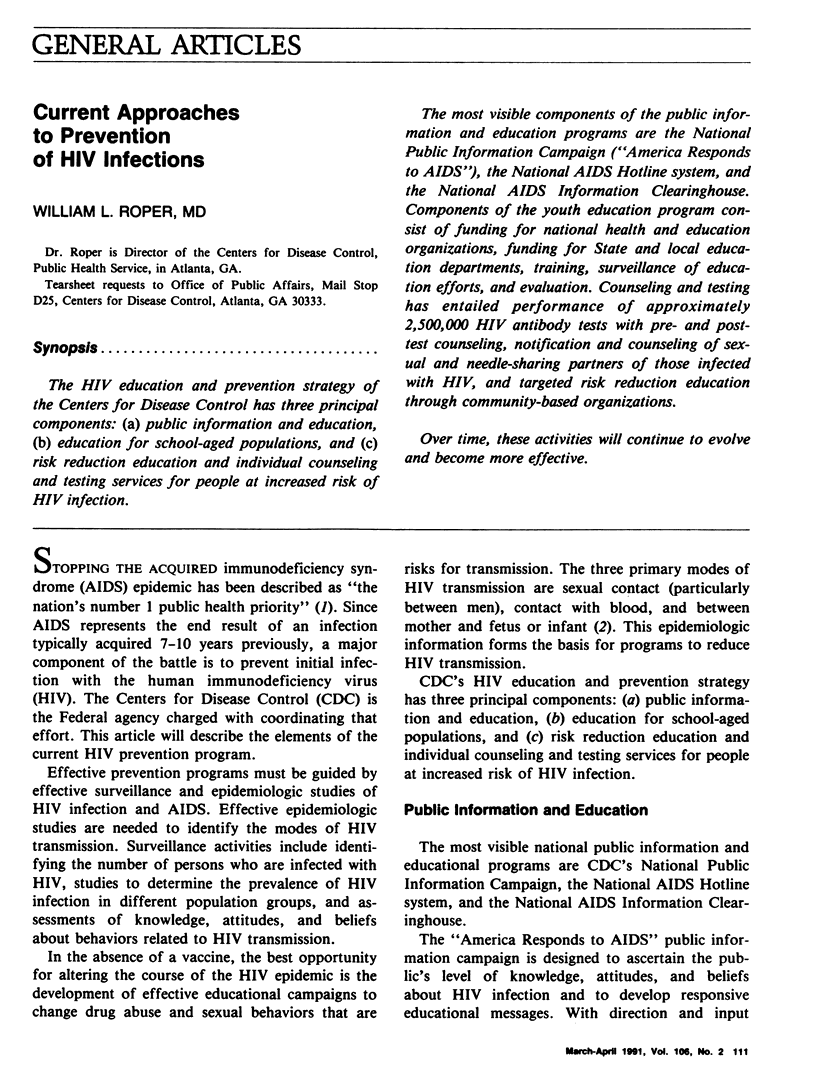
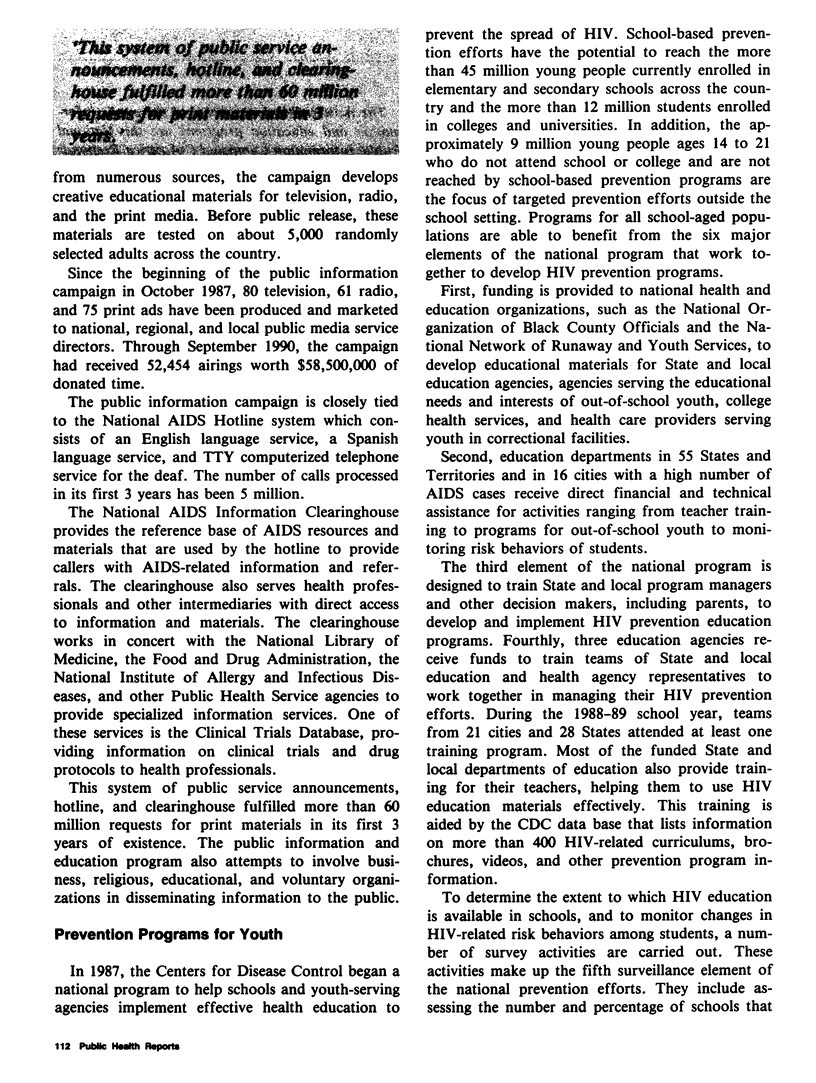
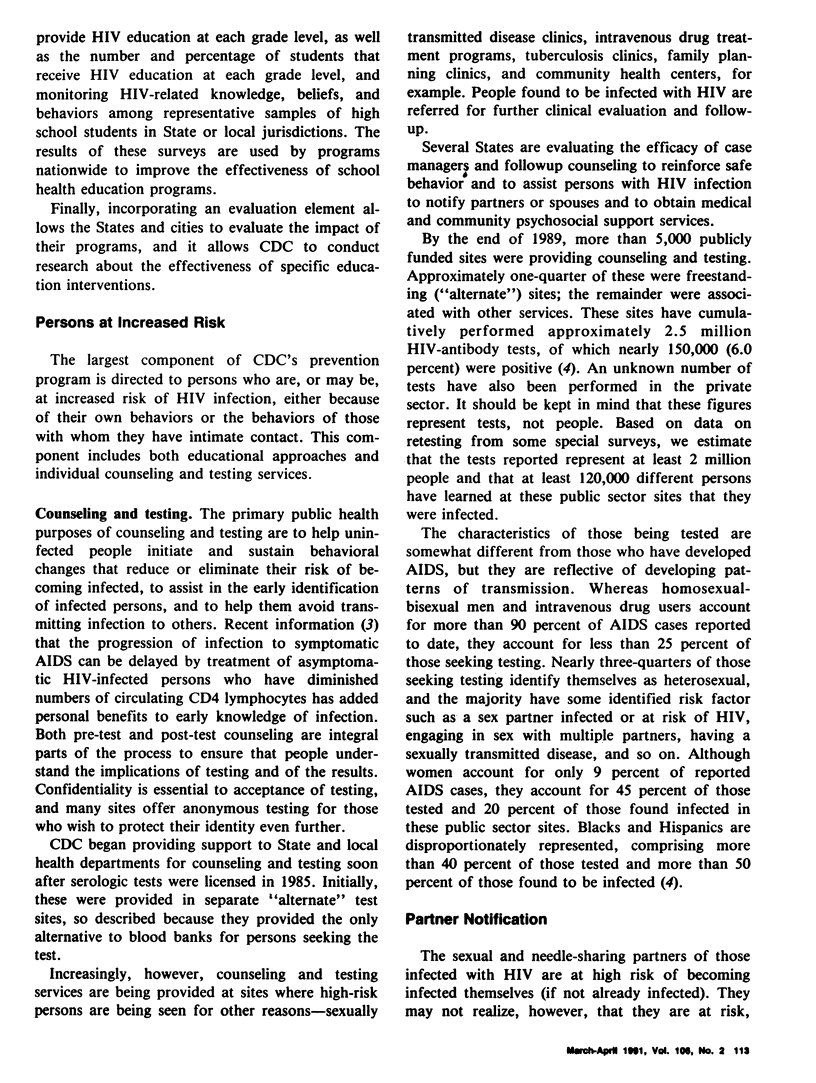
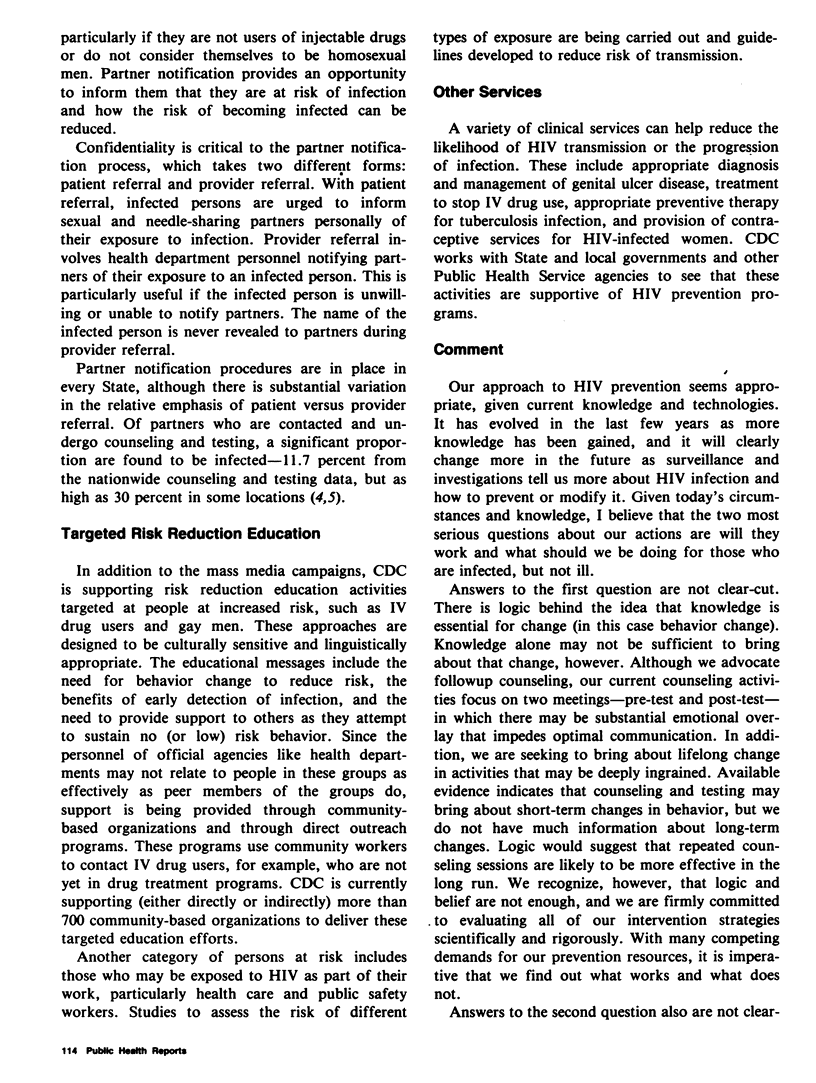
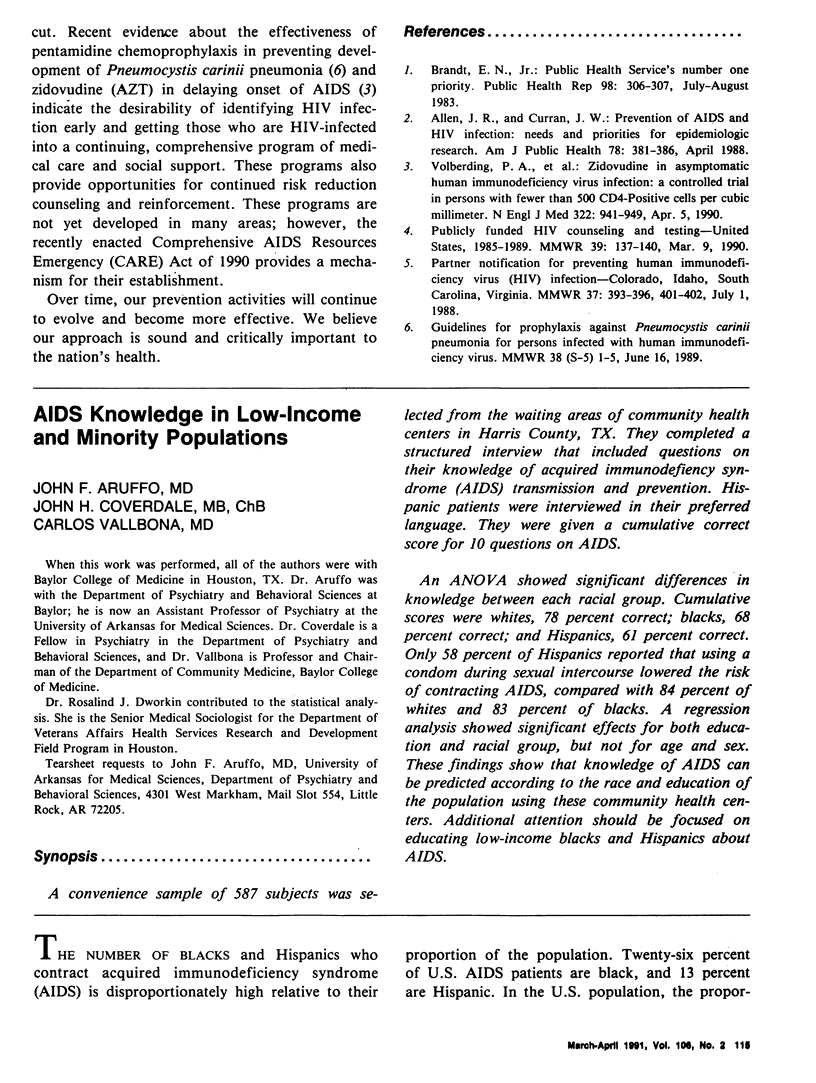
Selected References
These references are in PubMed. This may not be the complete list of references from this article.
- Allen J. R., Curran J. W. Prevention of AIDS and HIV infection: needs and priorities for epidemiologic research. Am J Public Health. 1988 Apr;78(4):381–386. doi: 10.2105/ajph.78.4.381. [DOI] [PMC free article] [PubMed] [Google Scholar]
- Brandt E. N., Jr The Public Health Service's number one priority. Public Health Rep. 1983 Jul-Aug;98(4):306–307. [PMC free article] [PubMed] [Google Scholar]
- Volberding P. A., Lagakos S. W., Koch M. A., Pettinelli C., Myers M. W., Booth D. K., Balfour H. H., Jr, Reichman R. C., Bartlett J. A., Hirsch M. S. Zidovudine in asymptomatic human immunodeficiency virus infection. A controlled trial in persons with fewer than 500 CD4-positive cells per cubic millimeter. The AIDS Clinical Trials Group of the National Institute of Allergy and Infectious Diseases. N Engl J Med. 1990 Apr 5;322(14):941–949. doi: 10.1056/NEJM199004053221401. [DOI] [PubMed] [Google Scholar]


